The Dead-Eyed Serenity of a VR Meeting Platform
Samson Amore is a reporter for dot.LA. He holds a degree in journalism from Emerson College. Send tips or pitches to samsonamore@dot.la and find him on Twitter @Samsonamore.
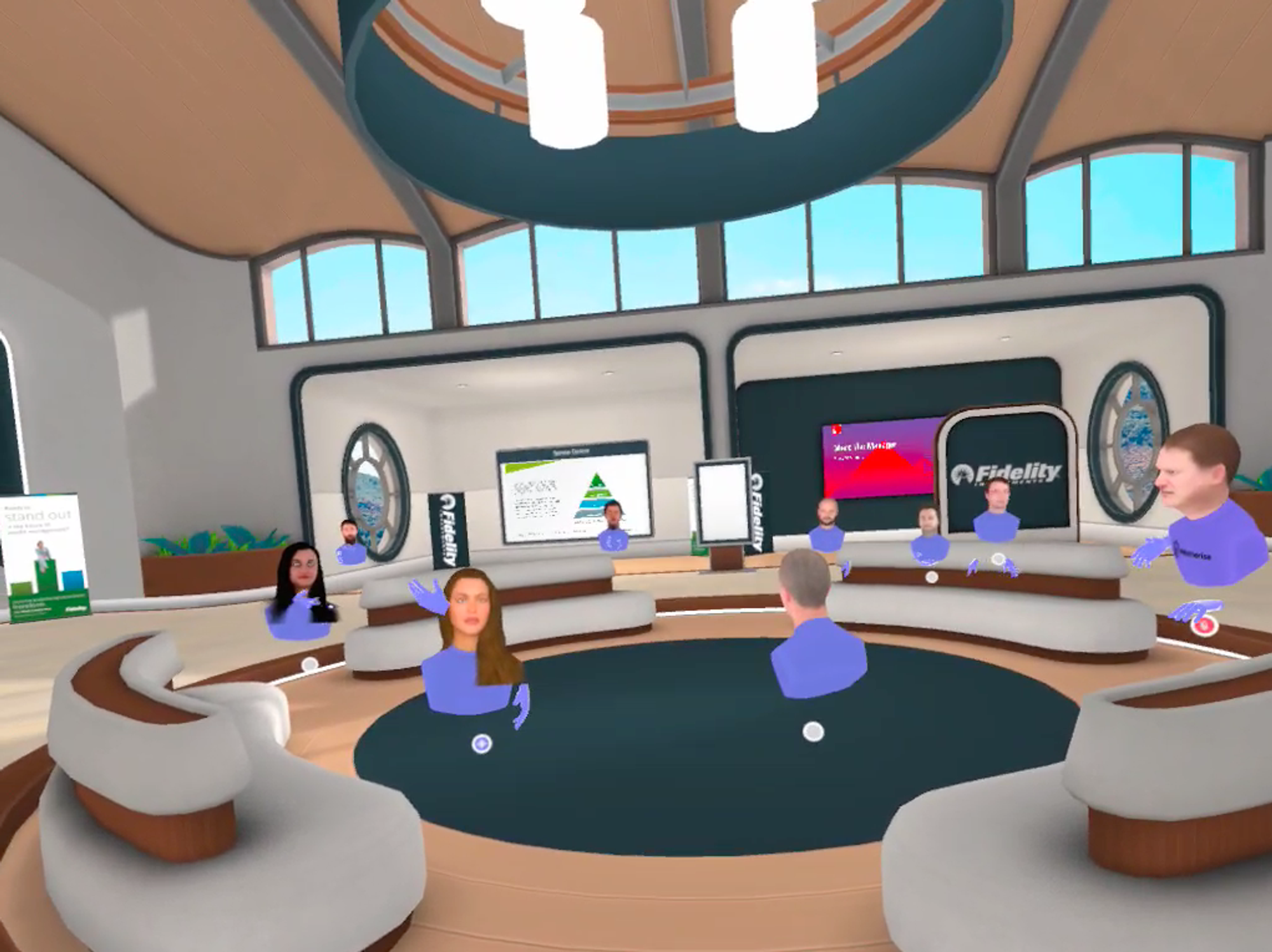
I’m standing in the center of my home office, feeling the full weight of the Oculus Quest 2 headset slouching on my forehead as I prepare for my first-ever virtual reality meeting.
While I wait for the meeting to come online, the home screen transforms from a chill open-air desert patio, into a glaring white background with text that says: Welcome, Samson. From the looks of it, I’m about to enter into Gatherings, a virtual reality conference room created by Mesmerise, a U.K-based startup with a new office in Santa Monica that claims to be the first enterprise platform for VR meetings.
With a few taps on my virtual Oculus home screen using my VR controllers, my avatar joins Gatherings’ advisory board chairman Sean West’s avatar in a minimalist dome-shaped building, well-lit, with a large, wooden arborous sculpture protruding from the center. The view outside the window is nice, a peaceful static rendering of Mediterranean farm country. This is the place Mesmerise refers to as its “Hub” — a virtual meeting space that connects to all of Gatherings’ other virtual conference rooms.
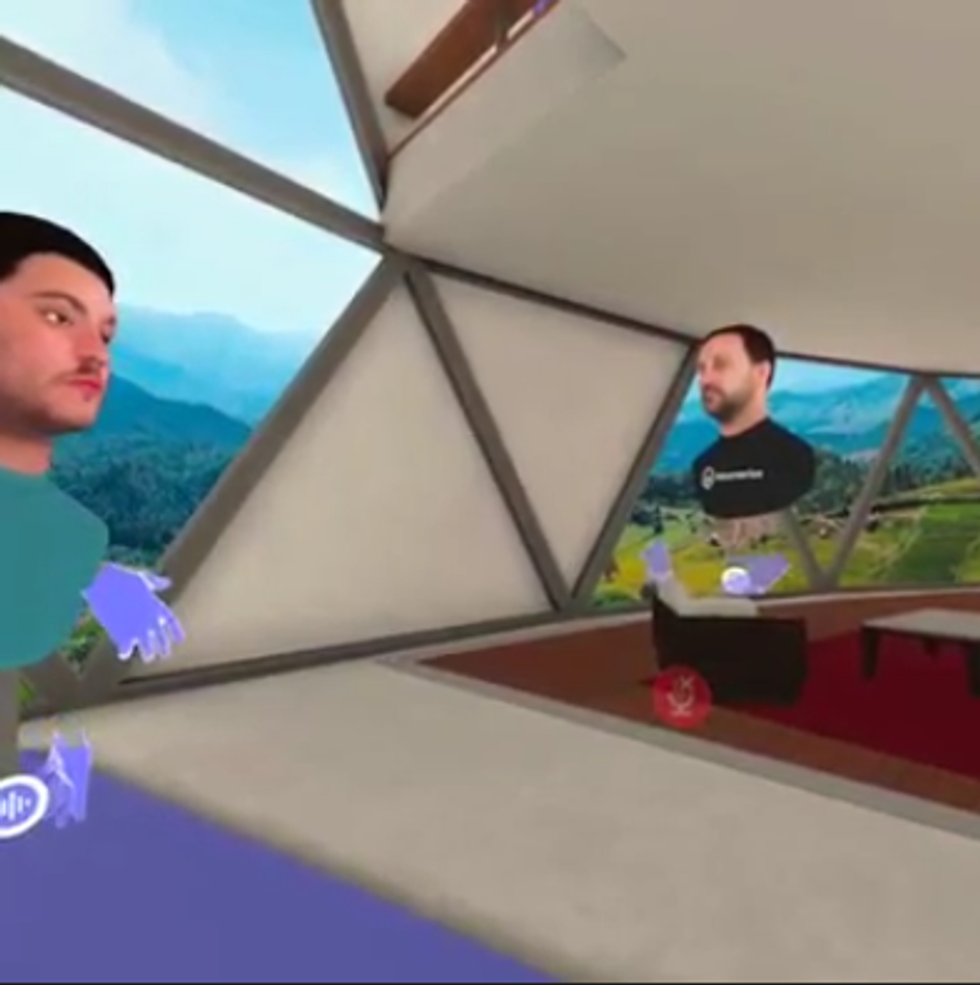
First impression? There’s clearly been a concerted effort to make the atmosphere of each meeting room futuristic but inviting. Mesmerise’s chief creative officer Michael Ogden, who’s spearheading the design efforts, is the former creative director for PlayStation Europe and is looking to bring gaming-quality graphics to the meeting software.
The avatars, however, are a different story. A day before the virtual meeting, I received the headset via Mesmerise inside my mailbox. The company also sent me detailed and straightforward instructions for how to onboard: Gatherings came pre-downloaded onto my headset, so all I had to do was boot up the app and enter a code that was previously generated for me to link my account.
A screenshot of my avatar in Mesmerise's VR meeting room. Photo: Mesmerise
After I was set up, I created my avatar by uploading a mug-shot style selfie to the Gatherings platform. Two minutes later I’m shown a preview of my digital avatar.
“Once you upload your photo we use a variety of services to create and refine the 3D model for your avatar, which we then bundle and publish so it can be shown dynamically in Gatherings,” West explains. “Our process is really focused on optimizing to get the right balance of visual fidelity and maximize the number of users in the space.”

Which means that for now, Mesmerise can only reproduce my head stitched onto the beginning of an upper body bust. “It’s optimized for the face, not the body,” West says, adding that “for business communication, we didn’t want to replicate walking.”
Not to mention, they can’t. Even with the $15 billion Mark Zuckerberg’s poured into Meta, the $244 billion company hasn’t cracked the code for realistically rendering a live lower body in VR. As part of its emerging Meta Horizon Worlds VR platform last month, Meta debuted their avatars with legs, but it was later revealed that the legs were instead added in post production before the demo, and not captured live.
In Gatherings, I also have no arms. I do have hands, though. And they float around wildly as I speak and gesture, sometimes overlapping each other while contorting in ways my body never could.
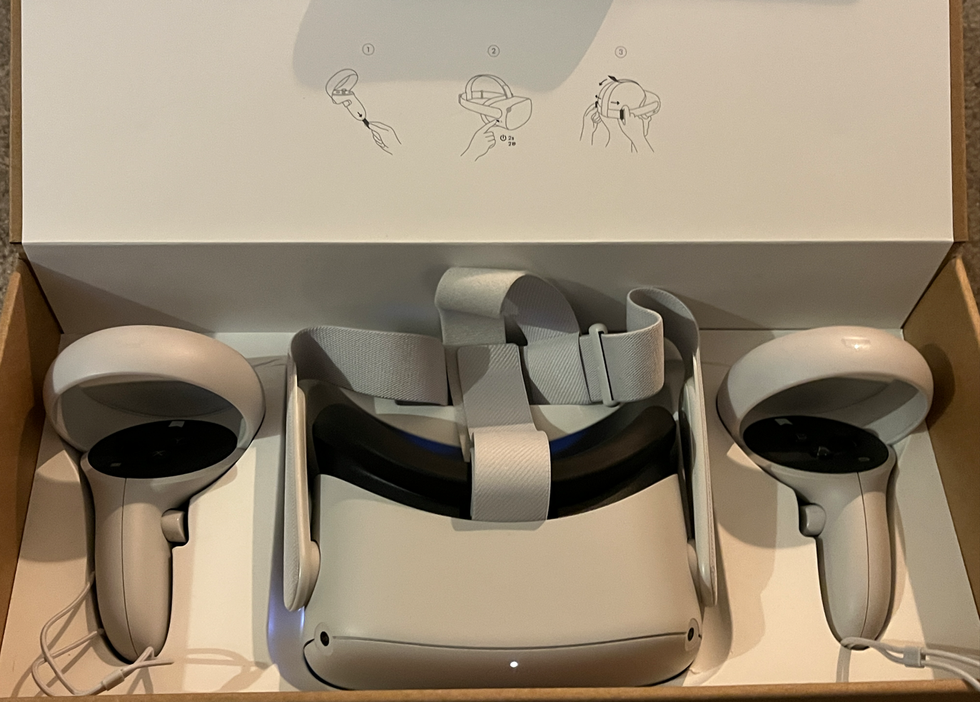
There’s no option to move your fingers in Gatherings either. The Quest 2 headset released in 2019 doesn’t have cameras in the headset or controllers to monitor hand movements. But, West tells me, the $1,500 Meta Quest Pro, which came out last month and which Mesmerise is still sourcing, has much more advanced motion capture tech and could make Mesmerise’s graphics more lifelike.
As for our conversation inside the virtual hub, the audio is clear but West’s avatar’s mouth struggles to keep up with his voice. It reminds me of an old dubbed Kung fu movie. In recordings, I notice my words also seem to emerge too fast for my lips to keep up.
As part of Gatherings, there’s also a feature in which a person can teleport to different places around the virtual rooms using the controller trigger. It does become difficult to hear West at times when he teleports around the room. This is because of spatial audio, a type of sound processing that is meant to simulate surround-sound to make headphone users feel more immersed. The audio feature is designed to make listeners feel that sound is coming from specific directions around them based on their distance to a speaker. It’s commonly used in video games, but becoming popular in VR.
The issue is that when West teleports more than a few feet away from me, his audio begins to fade out. I can only imagine then what it was like in a crowded event space, like the 200 person conference Gatherings recently held for the London School of Economics. Or the custom VR event space Mesmerise built for Morningstar’s Investment Conference—– a sweeping, expansive-open air courtyard made to look like a virtual town square and full of 4,000 virtual attendees.
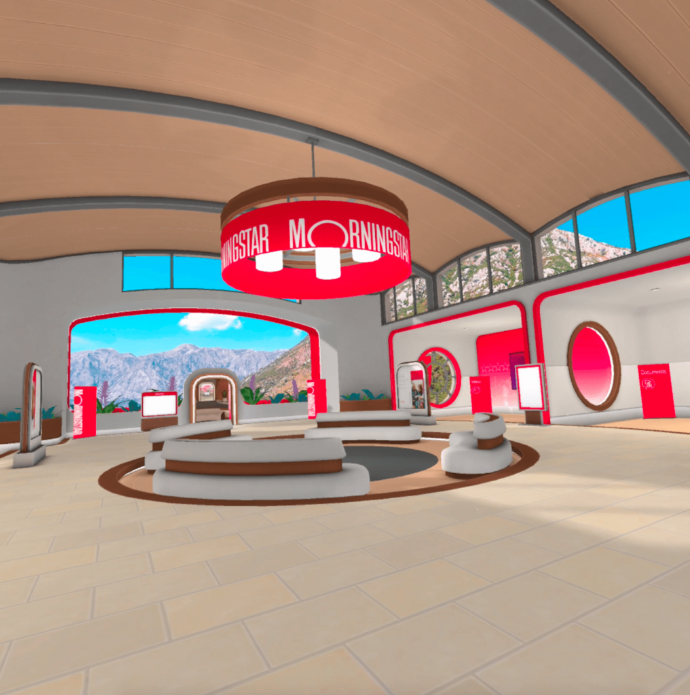
Maxx Bricklin, a partner at LA-based Bold Capital Partners who’s been trying out Gatherings to see if it’s a good fit for his company, says that while he’s impressed with what Mesmerise has created, he doesn’t believe anyone is ready to have a heavy headset on for hours at a time. “Nobody wants to put that on their head,” he says, though he notes that VR components get lighter with each innovation, and says maybe by 2030 we’ll get there.
Bricklin recently tried Gatherings alongside a 65-year-old user. “I was in and operating within a minute, and it took 10 minutes-plus to get it right and to teach him,” Bricklin notes. “My biggest problem is just the huge lift that it takes to get anybody on a Mesmerise learning platform.”
West however tells me that the coronavirus pandemic gave Gatherings a boost. And that the platform might soon be for applications beyond business. “What’s happened in the VR market is everybody’s segmented, and we’re trying to be involved in each dimension,” he says.
Mesmerise’s practice of loaning headsets to users to access Gatherings could also help further overall adoption of VR, which is expected to grow to 70 million headsets worldwide in the next four years. Couple that with other use cases for VR— gaming, education, training and large-scale entertainment—and West believes it’s only a matter of time before we see large-scale VR adoption.
Yet another positive sign that people are slowly warming up to the technology is that Meta’s Oculus Quest 2 (the device I’m using) recently surpassed lifetime sales of the Xbox Series S and Series X, a 97% spike in sales since 2021.
In fact, an interest in entertainment is why Mesmerise chose Santa Monica to be its second home. “People in the entertainment industry have been developing VR for decades,” West says and the company wants to be near the action.
Though West wouldn’t disclose how much money is behind Gatherings, he says it hasn’t taken any outside investment and that some money is already flowing in as companies pay to use Gatherings for meetings. Right now, the company’s primary clients are financial institutions and large multinational corporations that are looking for an alternative to in-person conferences or Zoom meetings to hold live events.
Bricklin, for his part, says he does see a valid use case for VR to “augment” in-person relations in financial services, where he says a virtual client connection is “the highest value and emotionally complicated.” But VR technology overall, Bricklin says, “still [has] interoperability issues” and “puts a lot of creative onus on the users to develop the right use cases.”
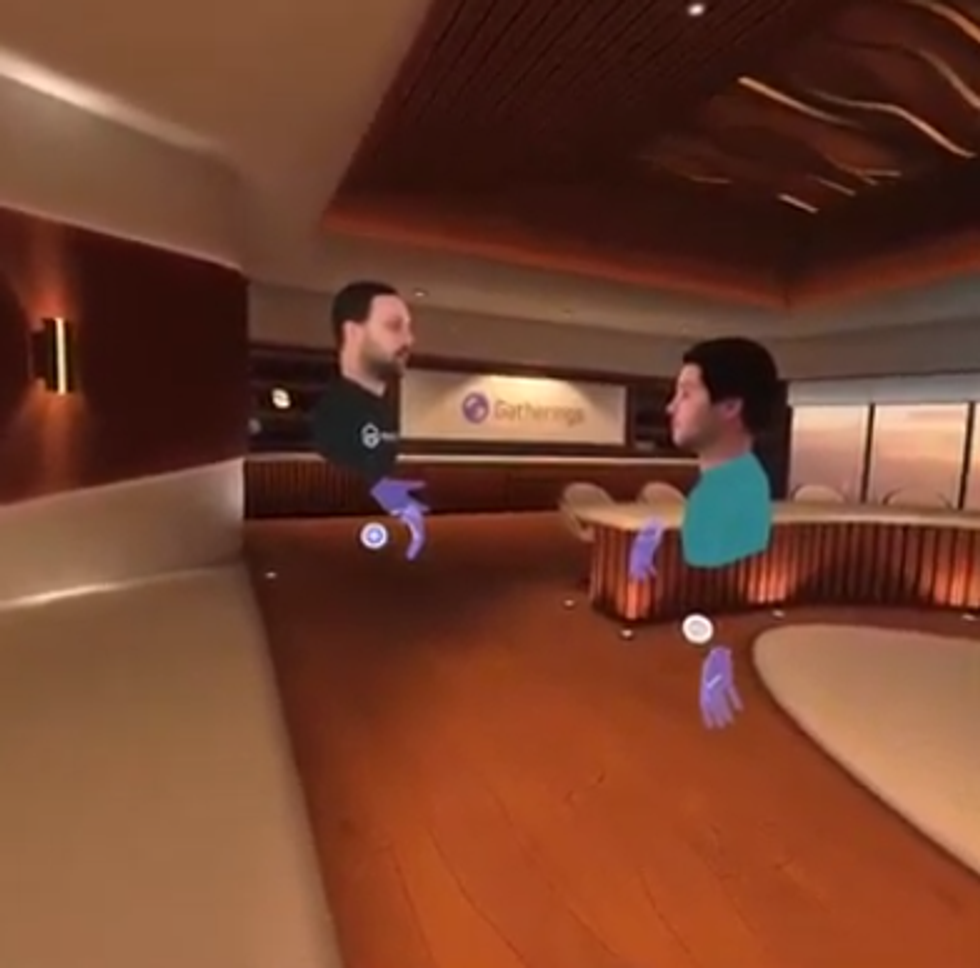
My avatar, left, next to Mesmerise's advisory board chairman Sean West's avatar, right. Photo: Mesmerise
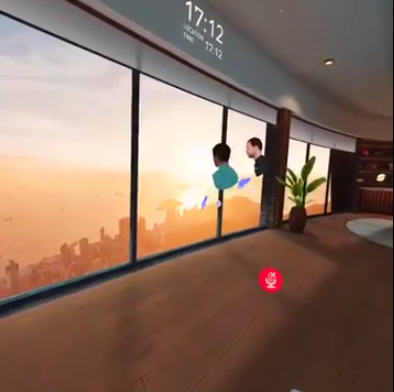
Even West acknowledges getting C-suites to onboard into Gatherings could be a problem. “Most executives don’t even manage their own calendars, some don’t even make their own coffee,” he says. West believes the slow adoption of VR is also due in part to the fact that people feel “vulnerable” in an environment where “you might reveal that you don’t know how this technology works, or you might do something silly.” His solution: make onboarding in Gatherings a thorough process that gives these newbies the feeling that they’re in control of the tech and can “harness the superpowers virtual reality gives you,” West says.
As for me and whether I’d be interested in conducting another meeting in VR? For now, it’s unlikely. Not only because I feel nauseous as I lift the headset off my face. But after reviewing the video of my avatar, I can’t help but be struck by the uncanniness of it. I know I look tired on Zoom in the mornings, but this avatar version of me looked simultaneously dead-eyed and like it had seen too much.
- CrimeDoor True Crime App Releases AR Experience of Notorious BIG, Tupac Murder Scenes ›
- VR Therapy App Tripp Acquires Meditation Startup EvolVR ›
Samson Amore is a reporter for dot.LA. He holds a degree in journalism from Emerson College. Send tips or pitches to samsonamore@dot.la and find him on Twitter @Samsonamore.





 Image Source: Perelel
Image Source: Perelel